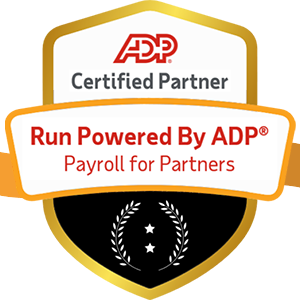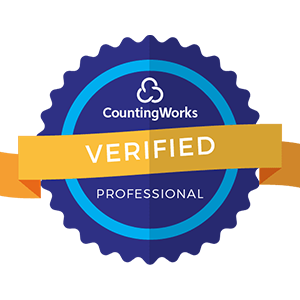Collaboration is key to success. Companies that foster a culture of teamwork and encourage cross-functional collaboration often outperform their competitors. However, achieving seamless collaboration across different departments can be challenging, especially in large organizations with diverse teams and complex structures. This is where Human Capital Management (HCM) tools come into play. By leveraging the power of technology, companies can break down silos, improve communication, and enhance collaboration across departments.
The Importance of Cross-Functional Collaboration

Cross-functional collaboration is essential for several reasons:
- Innovation: When employees from different departments work together, they bring diverse perspectives and expertise to the table. This diversity of thought can lead to innovative ideas and solutions that may not have been possible within a single department.
- Efficiency: Collaboration helps reduce duplication of efforts and streamlines processes. When teams work together, they can identify and eliminate redundancies, leading to increased efficiency and productivity.
- Employee Engagement: Collaborating with colleagues from other departments can be a rewarding experience. It provides opportunities for learning, growth, and building relationships across the organization, leading to higher employee engagement and job satisfaction.
- Better Decision Making: Cross-functional collaboration ensures that decisions are made with input from all relevant stakeholders. This leads to more informed and well-rounded decisions that take into account the needs and perspectives of different departments.
Challenges to Cross-Functional Collaboration
Despite the numerous benefits, achieving effective cross-functional collaboration can be challenging due to several factors:
- Silos: Departments often operate in silos, focusing on their own goals and priorities without considering the bigger picture. This can lead to a lack of communication and coordination between teams.
- Different Priorities: Each department may have its own set of priorities and objectives, which can sometimes conflict with those of other departments. This can lead to tension and difficulty in finding common ground.
- Communication Barriers: Different departments may use different terminologies, tools, and communication channels, making it difficult to effectively share information and collaborate.
- Lack of Trust: Without a history of working together, teams may lack trust in each other's abilities and intentions. This can hinder collaboration and lead to a reluctance to share information or resources.
How HCM Tools Can Enhance Collaboration

HCM tools can help overcome these challenges and foster a culture of collaboration across departments. Here are some ways in which HCM technology can enhance cross-functional teamwork:
- Centralized Communication Platform: HCM tools often include a centralized communication platform that allows employees from different departments to easily connect and collaborate. Features like instant messaging, video conferencing, and file sharing enable teams to communicate in real-time and share information seamlessly.
- Shared Goals and Objectives: HCM tools can help align goals and objectives across departments. By providing a centralized platform for setting and tracking goals, HCM technology ensures that everyone is working towards the same objectives and understands how their work contributes to the overall success of the organization.
- Transparent Performance Management: HCM tools provide a transparent and consistent approach to performance management. By setting clear expectations and providing regular feedback, managers can help employees understand how their work impacts other departments and the organization as a whole.
- Learning and Development Opportunities: HCM tools often include learning and development modules that enable employees to acquire new skills and knowledge. By providing cross-functional training opportunities, organizations can foster a culture of continuous learning and encourage employees to collaborate and share their expertise.
- Recognition and Rewards: HCM tools can help organizations recognize and reward employees for their contributions to cross-functional collaboration. By celebrating successes and highlighting examples of effective teamwork, companies can reinforce the importance of collaboration and encourage more of it in the future.
Best Practices for Implementing HCM Tools to Enhance Collaboration
To successfully leverage HCM tools to enhance collaboration, organizations should keep the following best practices in mind:
- Choose the Right Tools: Not all HCM tools are created equal. It's essential to choose tools that are user-friendly, intuitive, and align with the specific needs and goals of your organization.
- Provide Training and Support: Implementing new tools can be challenging, especially for employees who are used to working in a certain way. Providing adequate training and support can help ensure that everyone is comfortable using the tools and understands how to leverage them for collaboration.
- Lead by Example: Leadership plays a critical role in fostering a culture of collaboration. By modeling collaborative behavior and actively using HCM tools to connect with employees across departments, leaders can set the tone for the rest of the organization.
- Encourage Feedback and Continuous Improvement: Implementing HCM tools is not a one-time event. It's important to continuously gather feedback from employees and use that feedback to make improvements and adjustments as needed.
Real-World Examples of HCM Tools Enhancing Collaboration

Many organizations have successfully leveraged HCM tools to enhance collaboration across departments. Here are a few examples:
- Cisco: Cisco uses a combination of HCM tools, including its own Webex platform, to foster collaboration among its global workforce. The company has seen significant improvements in productivity, innovation, and employee engagement as a result.
- Deloitte: Deloitte uses a proprietary HCM platform called ConnectMe to enable its employees to connect and collaborate across borders and functions. The platform includes features like social networking, learning and development opportunities, and performance management tools.
- General Electric: GE uses an HCM platform called PD@GE to facilitate continuous learning and development across its global workforce. The platform includes features like personalized learning plans, on-demand training modules, and collaborative learning opportunities.
Conclusion
In today's complex and fast-paced business environment, collaboration is no longer a nice-to-have; it's a must-have. Organizations that foster a culture of collaboration across departments are better positioned to innovate, make informed decisions, and achieve their goals. HCM tools can be a powerful enabler of cross-functional collaboration, providing a centralized platform for communication, goal alignment, learning and development, and recognition.
By choosing the right tools, providing adequate training and support, leading by example, and continuously gathering feedback and making improvements, organizations can successfully leverage HCM technology to break down silos and enhance collaboration across departments. The result is a more engaged, productive, and innovative workforce that is better equipped to tackle the challenges of today and tomorrow.
Thought-Provoking Statements and Frameworks
- The Collaboration Maturity Model: This framework helps organizations assess their current level of collaboration maturity and identify areas for improvement. The model includes five levels of maturity, from ad hoc collaboration to a fully integrated and optimized collaboration culture.
- The Collaboration Quotient: This concept, introduced by author and consultant Evan Rosen, refers to an organization's ability to collaborate effectively across teams and departments. Organizations with a high collaboration quotient are better positioned to innovate, adapt, and achieve their goals.
- "If you want to go fast, go alone. If you want to go far, go together." This African proverb highlights the importance of collaboration in achieving long-term success. While individual efforts may lead to short-term gains, it's through collaboration and teamwork that organizations can achieve sustainable growth and success.
- The Collaboration Paradox: This concept refers to the idea that collaboration can sometimes lead to reduced efficiency and productivity in the short term, as teams navigate different perspectives and ways of working. However, the long-term benefits of collaboration, such as innovation and better decision-making, often outweigh these short-term challenges.
- "None of us is as smart as all of us." This quote by author Ken Blanchard emphasizes the power of collective intelligence and the importance of leveraging the diverse skills and perspectives of team members to solve complex problems and achieve shared goals.
By incorporating these thought-provoking statements and frameworks into their approach to collaboration, organizations can foster a deeper understanding of the importance of teamwork and inspire employees to work together more effectively across departments.






